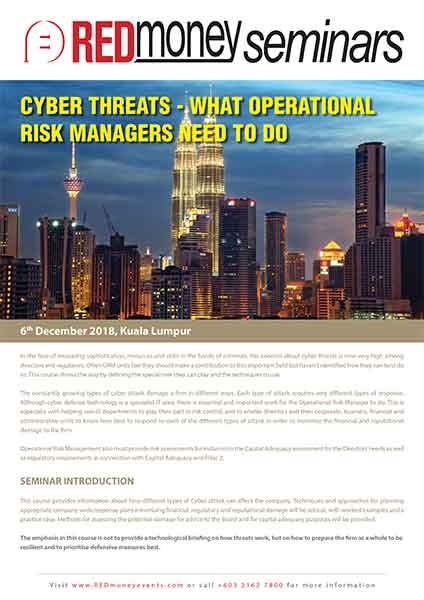
|
In the face of increasing sophistication, resources and skills in the hands of criminals, the concern about cyber threats is now very high among directors and regulators. Often ORM units feel they should make a contribution to this important field but haven't identified how they can best do so. This course shows the way by defining the special role they can play and the techniques to use.
The constantly growing types of cyber attack damage a firm in different ways. Each type of attack requires very different types of response. Although cyber defence technology is a specialist IT area, there is essential and important work for the Operational Risk Manager to do. This is especially with helping non-IT departments to play their part in risk control, and to enable directors and their corporate, business, financial and administrative units to know how best to respond to each of the different types of attack in order to minimise the financial and reputational damage to the firm.
Operational Risk Management also must provide risk assessments for inclusion in the Capital Adequacy assessment for the Directors’ needs as well as regulatory requirements in connection with Capital Adequacy and Pillar 2.
SEMINAR INTRODUCTION
This course provides information about how different types of Cyber attack can affect the company. Techniques and approaches for planning appropriate company-wide response plans minimising financial, regulatory and reputational damage will be set out, with worked examples and a practice case. Methods for assessing the potential damage for advice to the Board and for capital adequacy purposes will be provided.
The emphasis in this course is not to provide a technological briefing on how threats work, but on how to prepare the firm as a whole to be resilient and to prioritise defensive measures best.
KEY LEARNING OUTCOMES